Today marks the 175th anniversary of Waterloo Station opening, and underneath the huge public concourse, there’s a vast hidden world underneath the station to explore.
Opening as Waterloo Bridge station 175 years ago today, on 11th July 1848, the station is named after the nearby bridge, not the other way round, and when it opened, was a much smaller station than it is today. It seemed to drop the Bridge part of the name fairly quickly, if only unofficially, as newspaper reports are quick to call it plain Waterloo Station, and was officially renamed Waterloo Station in 1886.
As with most large stations, it was built upon arches so that the space underneath the station could be used for cargo, but it wasn’t even meant to be a terminus station, as it was built with the intention that the railway would be extended later into the City of London.
The station expanded in a rather haphazard manner over the 50 years after it opened, with each expansion of the station still being considered a temporary one, just waiting until they got their permission to extend the railway into the City.
This resulted in a very messy layout, and the platforms were famously so confusingly numbered that they became a common music hall joke. For example, Platform 1 was in the middle of the station, and as the station was split into three core services, some platform numbers were duplicated. A person told to go to platform 3 might need to ask if that was the central platform 3 or the western platform 3.
However, by the end of the 19th century, the railway had resigned itself to the fact that Waterloo station was going to be its terminus and that the current station needed a major overhaul, so they rebuilt the station, opening the current building in 1922.
However, the station was very much built above the existing railway arches, and what was once a bustling centre of cargo and freight deliveries and loads of staff rooms, is now largely empty and this vast space in central London has been fairly little used for decades — until now.
After being taken through an unmarked door, a whole new hidden world opens up that’s not just a marvel to see down here, but is packed full of rich human history.
Apart from the day to day functions of the railway station that you might expect, it also served an important function during the two world wars, offering both air raid shelters for staff and passengers when needed, but, it’s thought, some of the arches were used as document storage for the Houses of Parliament. A theory supported by the presence of the sort of double doors with eye holes and locks that I have seen in other WWII bunkers.
Down here there are other remnants from WWII, such as the men’s toilets, still with their cubicles in place, from the time the arches were used as shelters.
During the Great War, part of the station undercroft was also used as a first aid centre for soldiers who might have been injured on their way to Waterloo to catch trains to the front, to suffer far worse injuries than the bar room brawl that might have sent them to the nurses underneath Waterloo station.
Although seemingly empty as we walked around, the arches aren’t unused, as there are spaces down here for ventilation equipment, electrical equipment, and snaking all over the place, vast quantities of the cabling needed for modern communication systems, and loads upon loads of storage space.
Some of the arches are now coming back into use though, as they’re being fitted out with modern facilities and ventilation. In times past, when people smoked and ventilation was poor, these arches must have been pretty ghastly places to spend time in if you didn’t smoke. It hasn’t been particularly cost effective until fairly recently to upgrade the arches for modern conveniences, but it is now, which also means these photos are likely the last time you’ll see the arches in their current disused state.
One of the brick buildings constructed down here houses the public address systems, and we were told that the PA inside is just about audible and muffled enough to be very good fun in scaring people with stories of ghosts down here. The space was once used for zombie games, which must have been fun.
A large number of the arches were used for social clubs to support the railway staff, and segregated in those days in separate facilities, the British Transport Police, who weren’t supposed to mingle with the other staff at the time.
Some of the spaces can still show signs of their former use as social clubs. There’s one room that contained a boxing ring, and we could just about see the remains of a punchbag at the far end of the room, sadly too far to get to over the now rotting floorboards.
Another large set of arches was the darts room, and inter-station rivalry in the sports led to many matches between the teams. There was pressure to win though, as losing often meant losing offers of overtime for several months. At a time when railway staff were often on quite low wages, overtime was less an optional top-up, than an essential way of making ends meet. So the sporting rivalry was intense.
The low wages at the time — and drivers excepted, most railway staff today are on fairly modest wages — meant that both overtime was needed to pay the bills, and the social clubs provided by the railways as essential in providing affordable leisure for staff. The social clubs closed down a long time ago, and while the railway firms were doubtless happy to save on the cost of running them, in truth even without cost-cutting as an excuse, they were losing popularity and tended to fade from use over the years.
But down here underneath Waterloo station, their echoes remain in the spaces that used to resound to the noise of men (mostly men) enjoying themselves.
One of the more remarkable rooms was a huge archway used as a rifle range for railway workers. Remember, a lot of these facilities were for people who had been in, or might have ended up fighting in a war, so partially training and a leisure pursuit. I dread to think of the noise for anyone next door listening to those guns firing in such an enclosed space though.
It was also the only place we found a ladies loo – just the one cubicle, but yes, there were a few ladies in here towards the end of their lives as social spaces. Rather later, the room was turned into a snooker hall, and the ghostly presence of a dustsheet covered full size snooker table loomed out of the darkness as we entered the cavernous space.
More vast empty spaces with lighting and vast gloomy spaces lit by small torches, and eventually heading out via a veritable maze of narrow corridors to another unnamed doorway, we leave the hidden spaces behind to their silent memories and step back into the noise and bustle of a busy railway station.
A legacy of 175 years of an ever-evolving Waterloo Station lies hidden behind locked doors, but slowly coming back to life as the arches are refurbished for modern use.

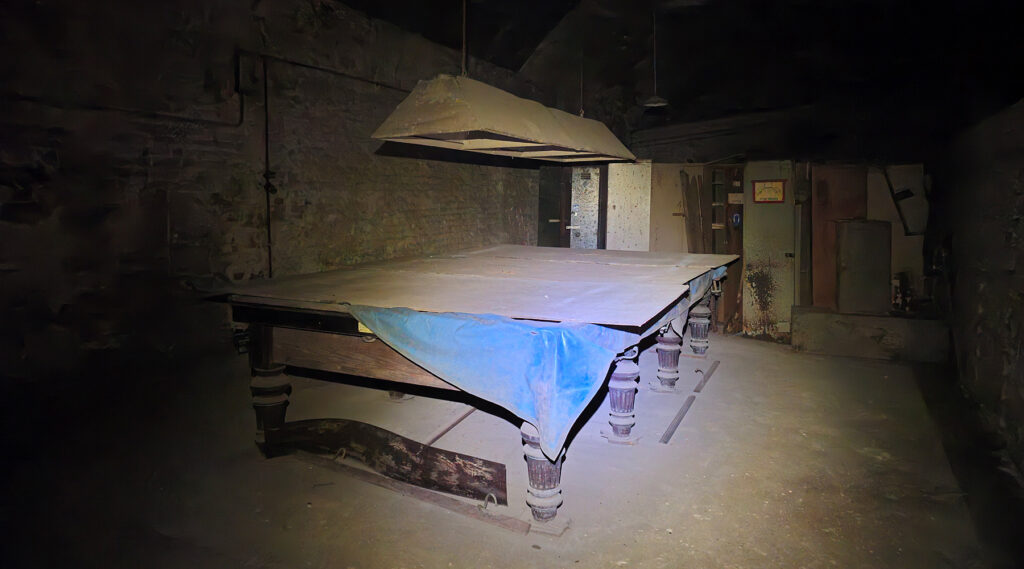
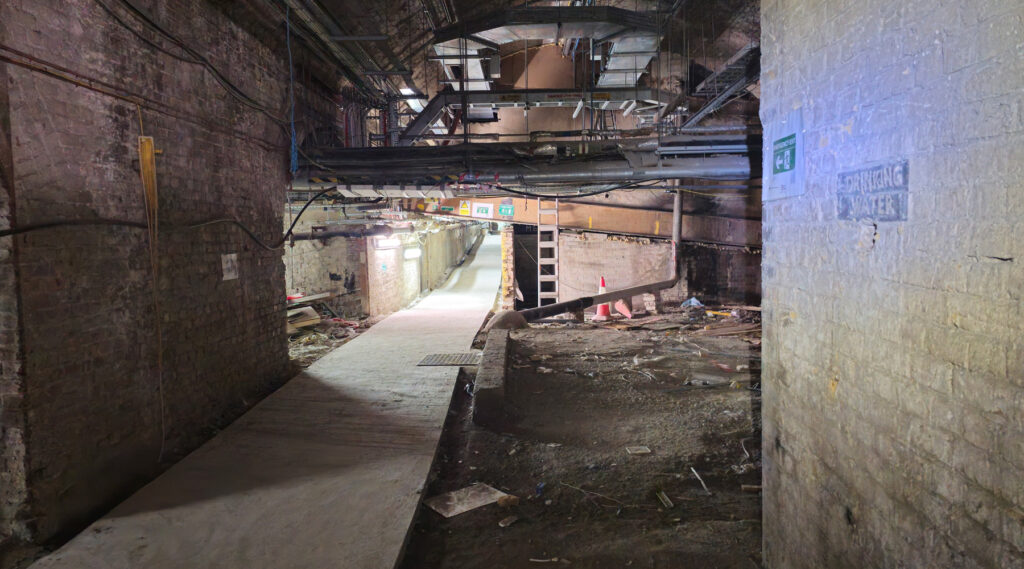
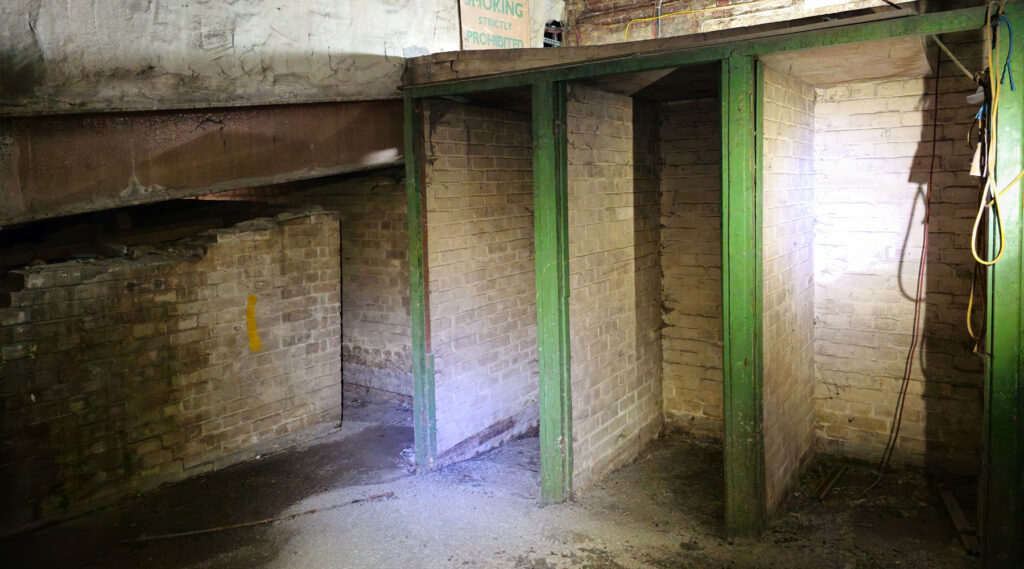
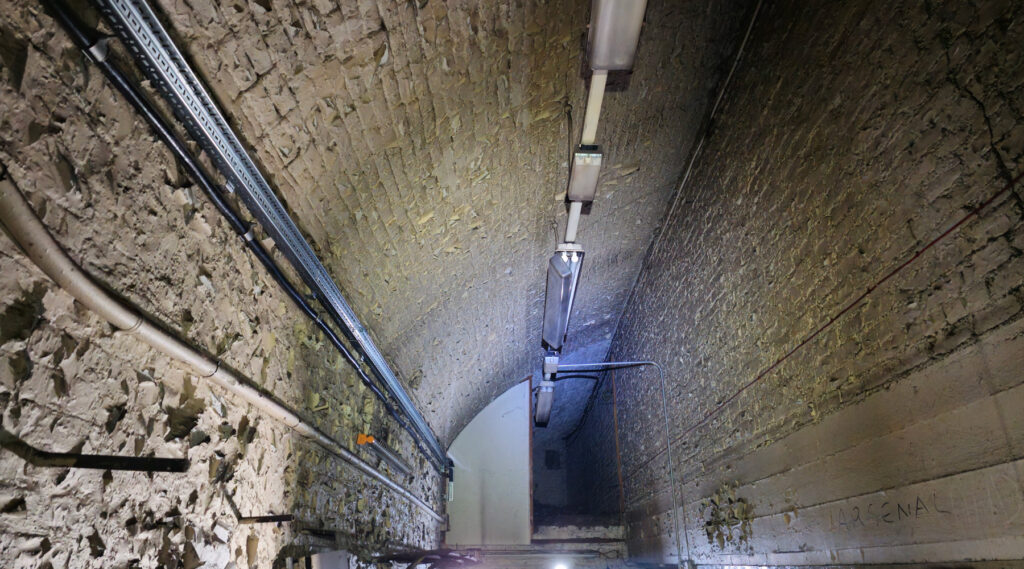
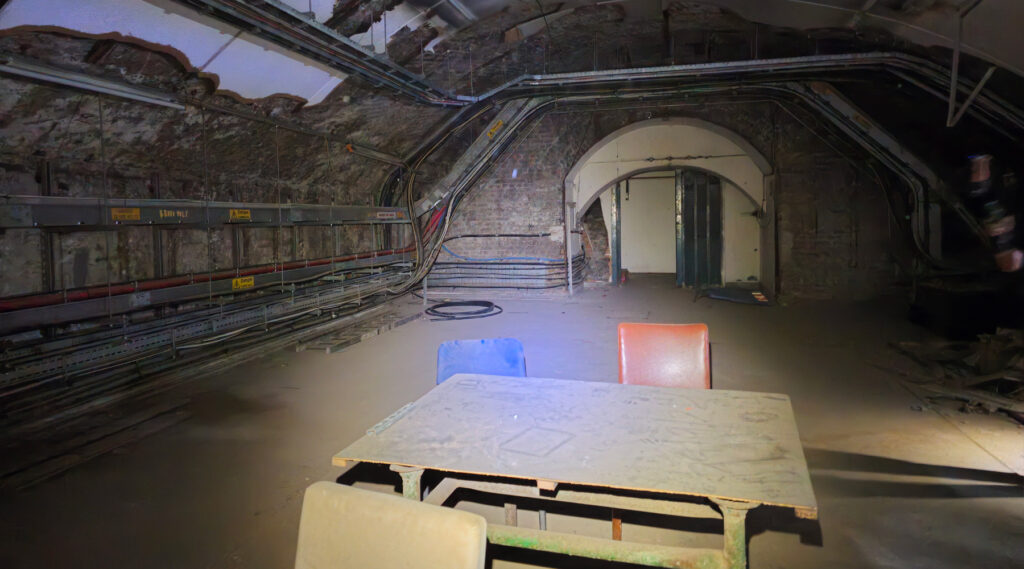
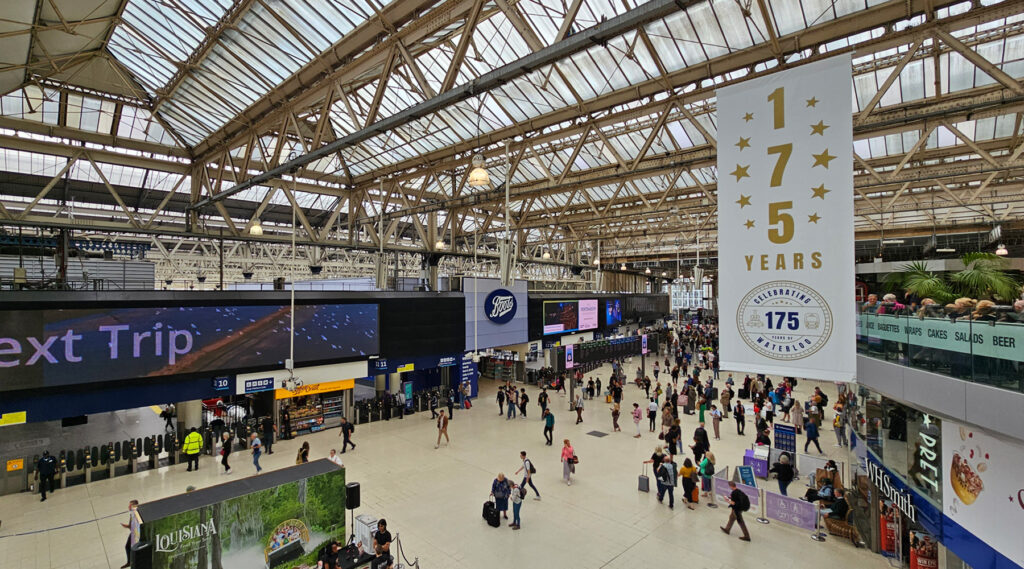
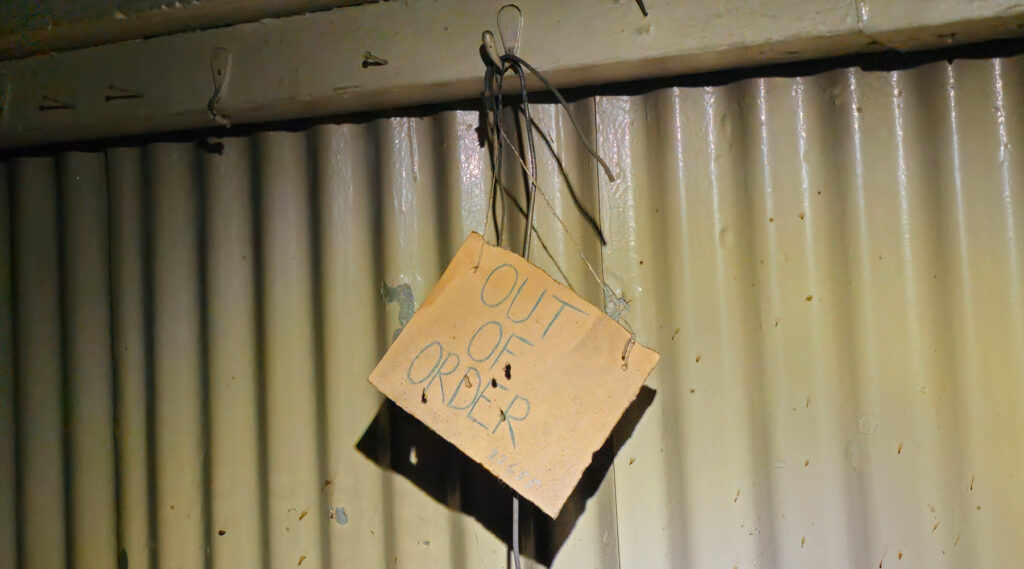
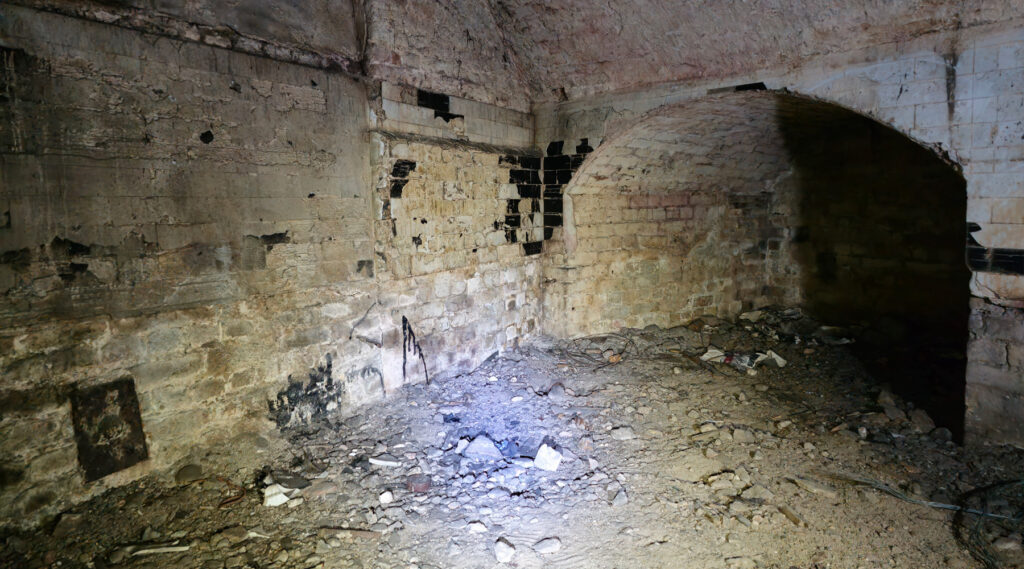
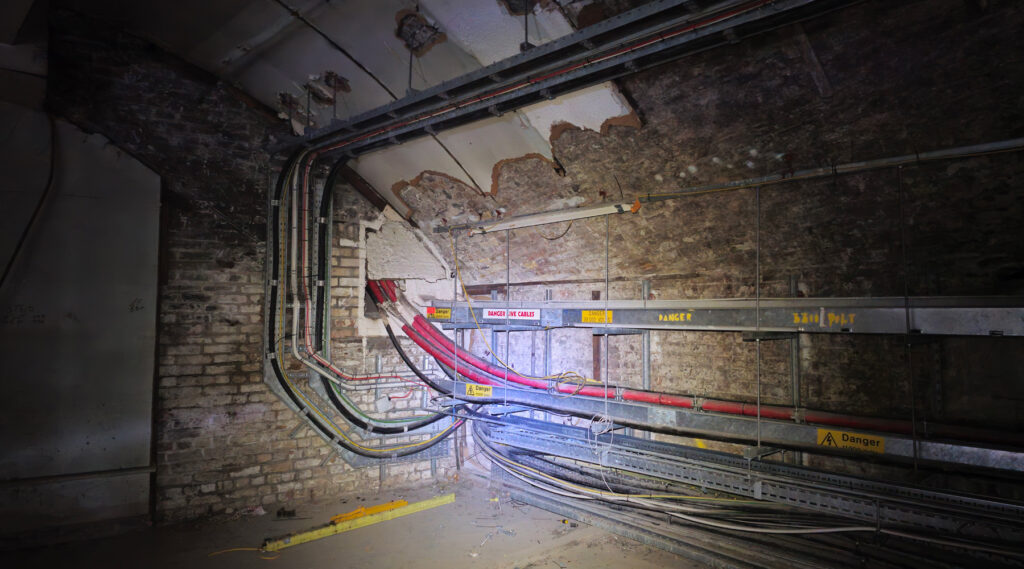
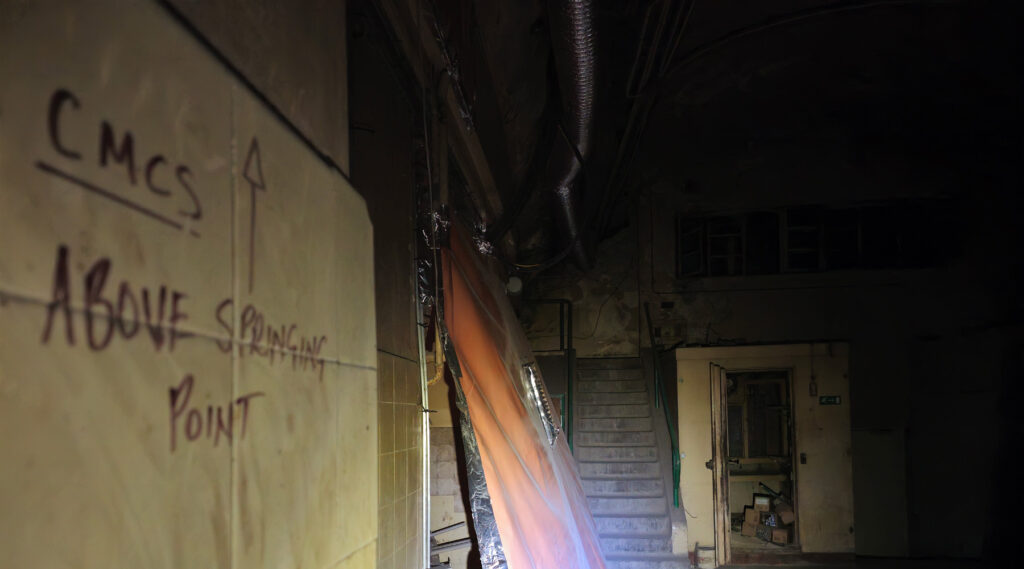
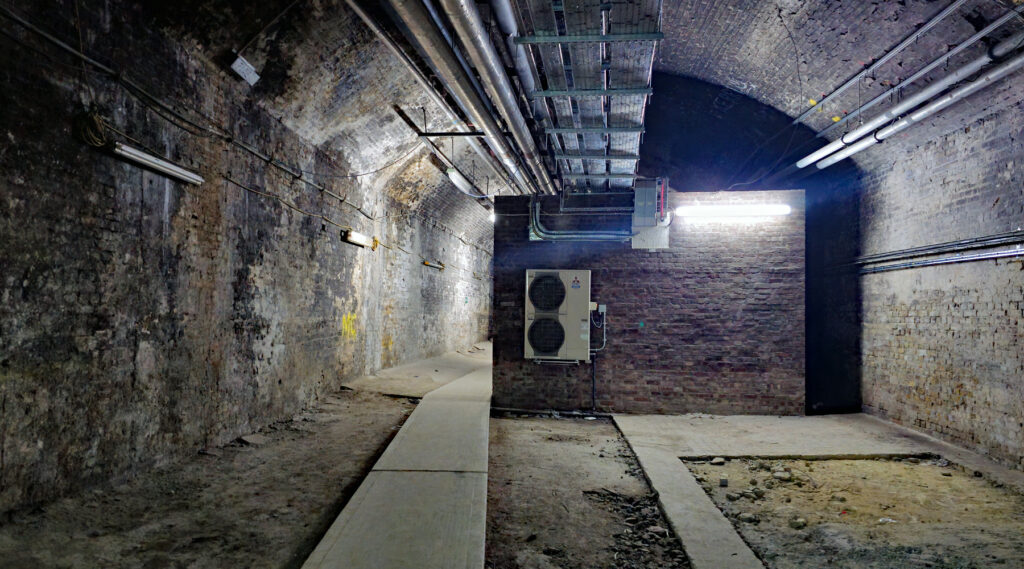
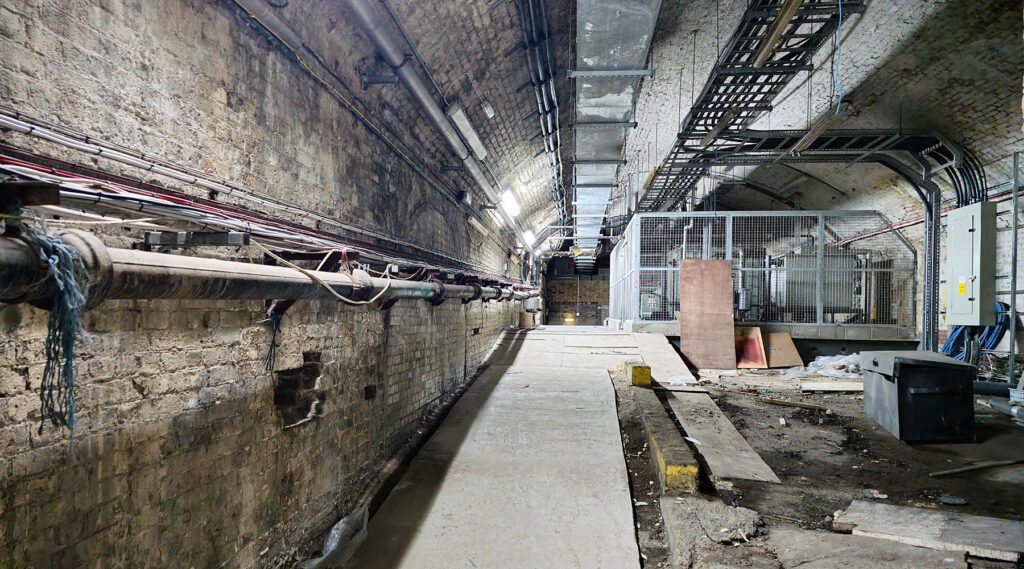
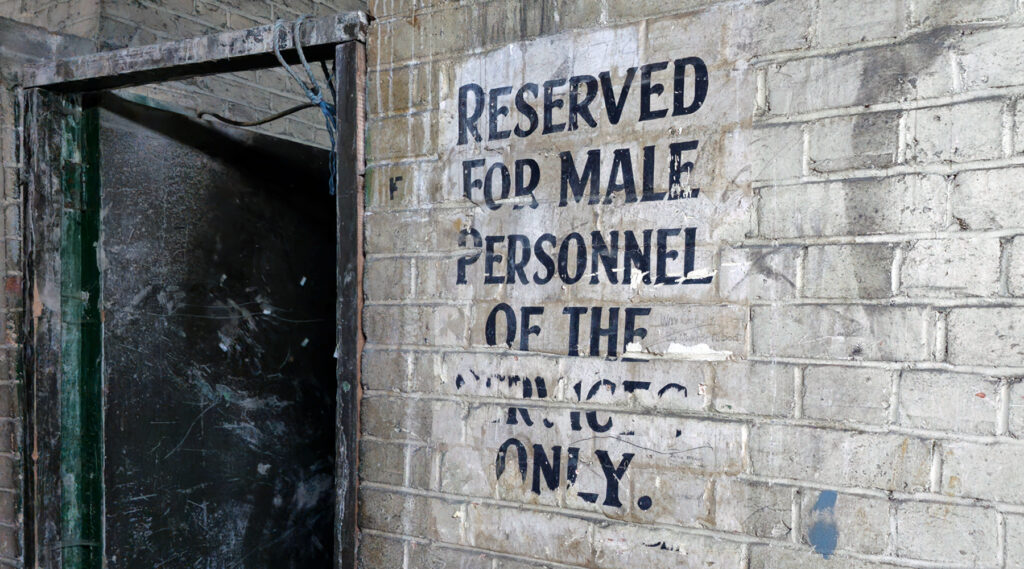
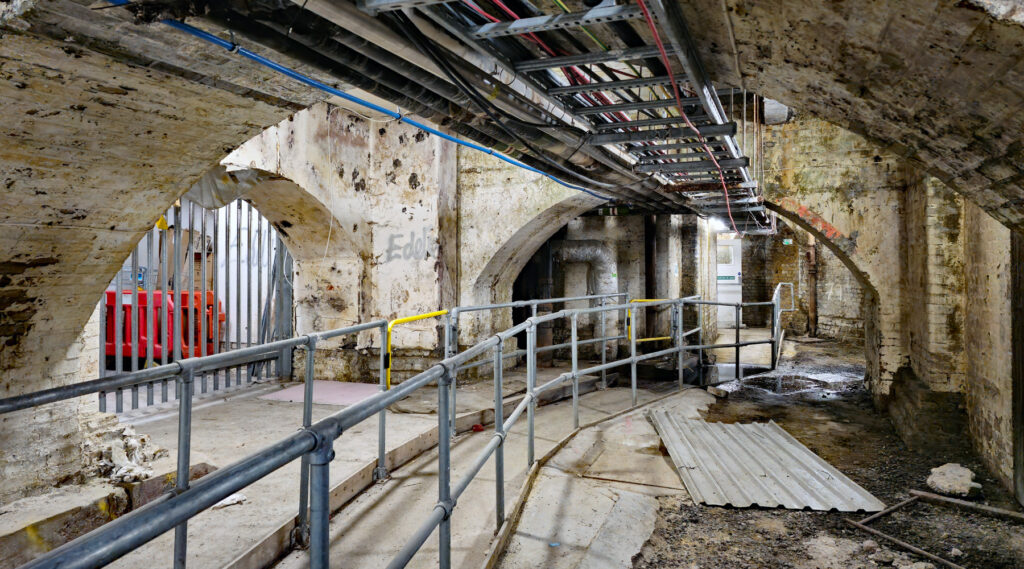
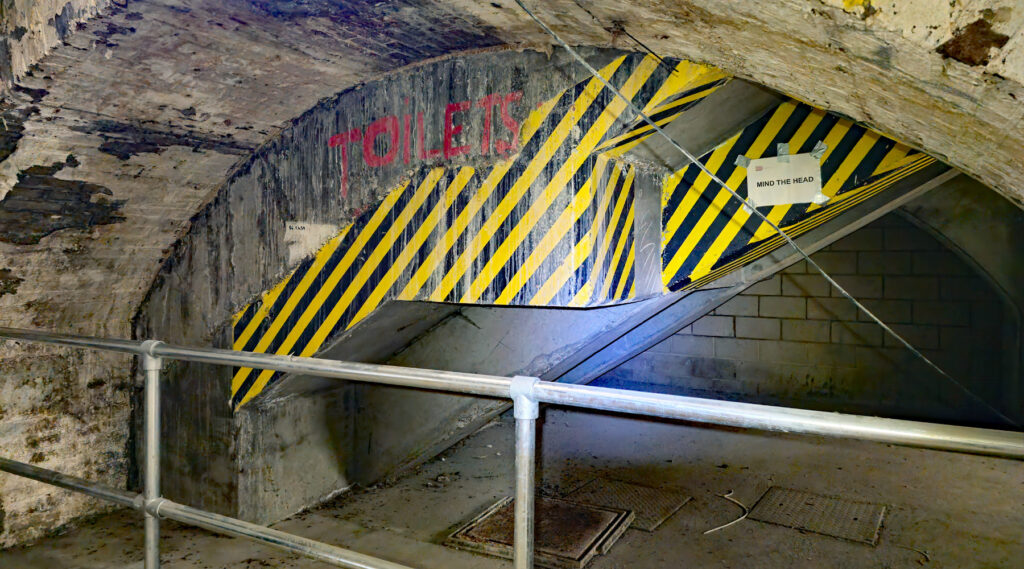
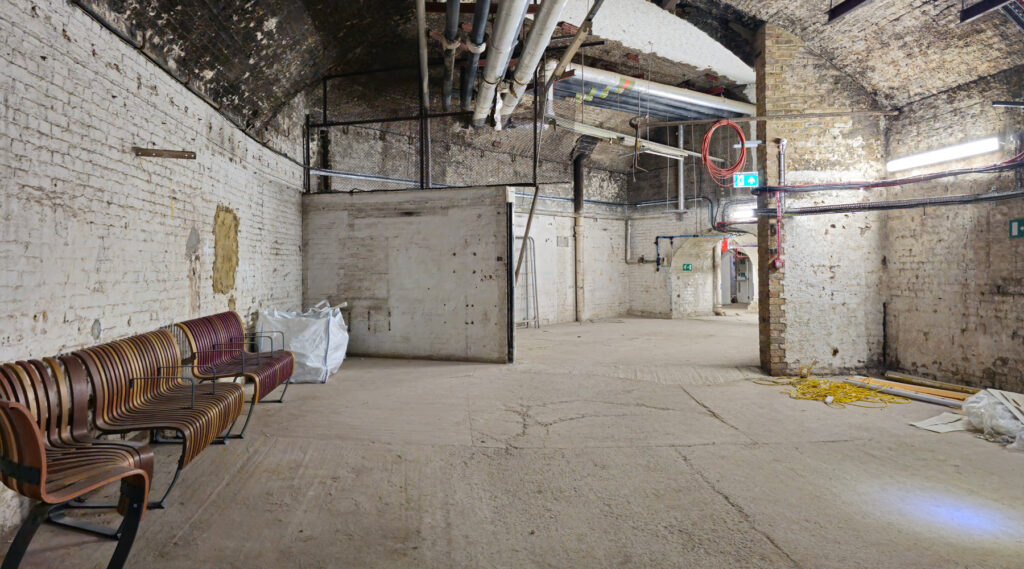
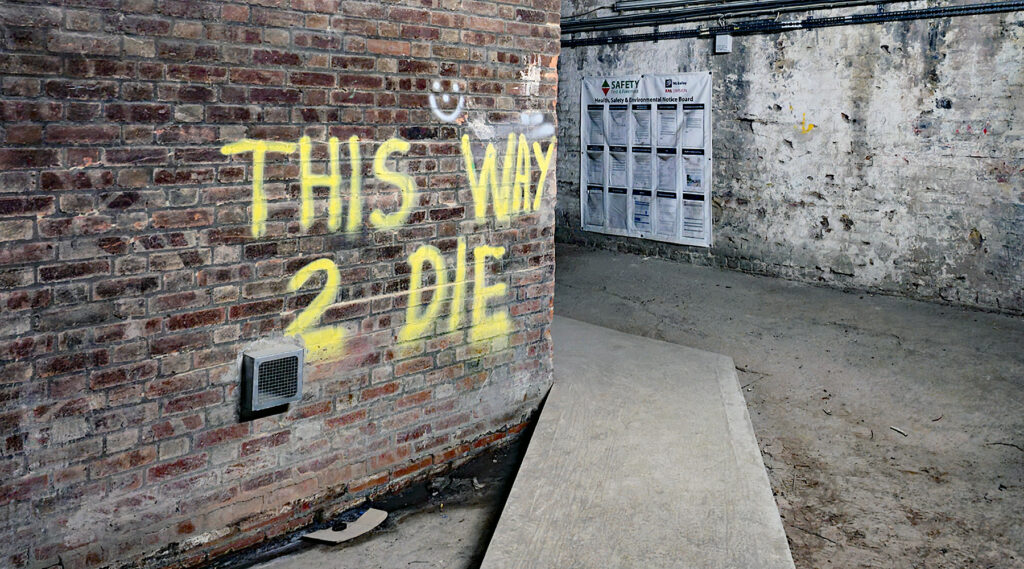






Incredible! What became of the plan to extend the platforms info the current concourse area, and to move the majority of concourse features and facilities down to the arches level? An interesting idea but, as seen at London Bridge, there are pros and cons to such an approach.
Assume not actually open for the public to view? Was at station yesterday and was impressed by new lower ground shopping area
The staff canteen was down there in 1973 when I did a student holiday job. For several years afterwards when I passed the unmarked door I could still smell the cottage pie.
I used to visit the staff canteen when I was an electrical apprentice for BR
I remember visiting this underground area about 40 years ago.
As you mentioned you step through an unmarked door into another world.
The friend I went with was carrying out heat loss surveys at the time for BR.
I remember there was still a lot of asbestos around-hopefully removed now.
There was a massive boiler room with a huge brick chimney soaring up through the glass roof above.
Also on the outside of the station at low level there was a monster railway engine lift.
Thanks for giving me the opportunity to view all your photo’s-I think I stupidly forgot to take a camera on my visit!
That monster “railway engine” lift was the original mechanism by which W&C line tube trains were removed and returned to the tiny depôt underneath the arches of Waterloo mainline station.
In use until demolished for the Eurostar terminus, they now hire a bloody great crane on the other side of the station platforms. You can see the caged open shaft and look down onto a bit of a mess of spare rails and other detritus/essential spares.
My dad used to take me to see the boiler room when I was a kid in the 60s. I recall an ex railway fireman used to stoke it. It looked like an ex loco boiler (well it did to an excited 8 year old!!)
Back in 1980 I worked for the National Westminster Bank… they had a Gun Club based in one of these arches with a rifle range (firing .22 small-bore rifles). While you waited for your turn to shoot on this range there was a snooker table available for the members. Seeing the photo of the table reminded me of days long gone.
I remember the rifle range very well. My father was a member of the BBC Rifle Club which used the range weekly and I used to meet him there sometimes in the 70’s. It was used for.22 rifle shooting practice and competitions but also had a full size snooker table which he also always used. The BBC Club moved from there when other facilities became available on BBC premises.
I was a member of the BBC Rifle club too, still have my membership card
I worked for wine company who had their cellers and vats for big hotels under Waterloo station importers of mateus rose table wine back in 1960 . Under platform one .went from arches Waterloo cut came out Blackfriars
I did some work for the ‘Works Maintenance Engineers dept’ of BR between 82 and 88 and during that time i was sometimes based at the ‘WME Arch’ – there was a locked steel door at the far end (but WMEs had keys to everywhere) that led to a service corridor behind all the arches/retail units, during my lunchbreaks i used to wander the old arches looking at the wartime stuff that was still about, rows of old beds, signs,secret doors that opened onto tube lines! etc. Somewhere i think i still have a copy of the floor plan of the whole of the lower level of the station – it was a fascinating place!
As a BR apprentice, I was sent to get something from the Stores in Lower Road under Waterloo, but I was given incorrect directions and spent about an hour wandering about in those arches. I was told that because the station site was originally a marsh, there was a lake under the station somewhere!
The street at the back is called Lower Marsh so that tied in 😊
I too was a member of the BBC Rifle Club.
The 25 yard range was for small bore (.22) rifles.
At the side, there was also a single pistol range which was restricted to .22 pistols when used by the BBC. The BR shooters were allowed to use full bore pistols (9mm, .38 etc) and that must have been mighty noisy!
The snooker table was at the back of the rifle range and I played many frames there in between shoots.
I really like areas such as this, industrial history, the railways, historic architecture and such have always been a favourite of mine since a child, I am a volunteer for a coal mine engine house in The South Wales valleys and had dreamt as a child of one day becoming something to do with this exact engine house which I thoroughly enjoy.
Around 1970 I was a member of the Waterloo and City gun club and used the range there.
Met Police firearms officers also used the range and we used a large bore pistols and even sometimes black powder revolvers. It was great fun! Noisy and smelly but a great memory.
“there were a few ladies in here towards the end of their lives as social spaces”
Unfortunate phrasing there 😂
I was a junior tracer in a drawing office with B R at Waterloo station
l was 17in 1962 when I used
go to the rifle range after work .Also there was the lost property place where all the items people left on train and
you buy anything for very money Very Happy times .
I used to be a member of one of the shooting clubs there and spent time playing snooker too. You could just about here the noise from the range whilst in the snooker room but the walls were so thick that you wouldn’t hear it in the next arch. I always remember how we closed the range and left there through the back of the range and over a bridge that I believe was over the Waterloo and city line.
So, are there any plans for guided tours of the underworld?
Same question as Tony: How can I get in to see all these wonders?
When I read “the PA inside is just about audible and muffled enough to be” I was sure it was going to end “used on today’s Tube trains” 🙂
My dad was Manager of the station in the 1960s. I used to visit with him as a kid and he used to take me down under the station to see the huge boiler that was stoked by an old chap who was formerly a railway engine fireman. Do you know if anything of the boiler remains?
I was a Police Officer stationed here in the late 70s. We would often wander down here on night duty. Easy to get get lost.
The gun club was still popular and well used. I recall that the snooker table had been used for other pursuits and was no longer in pristine condition